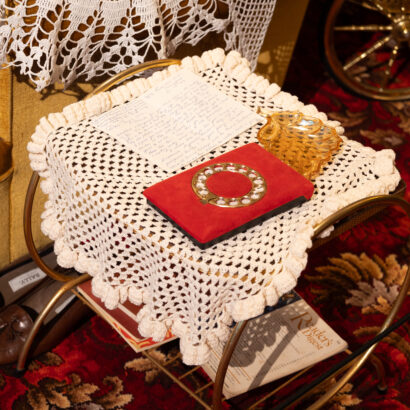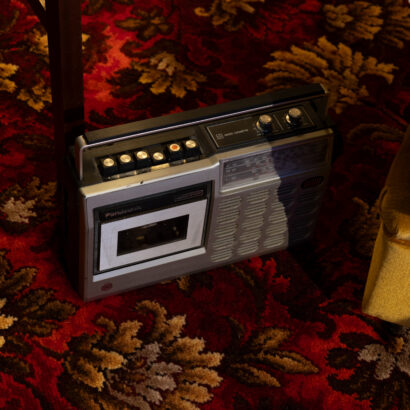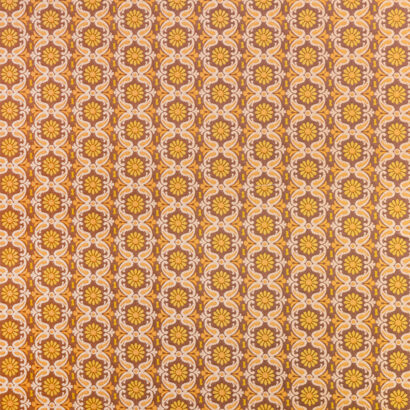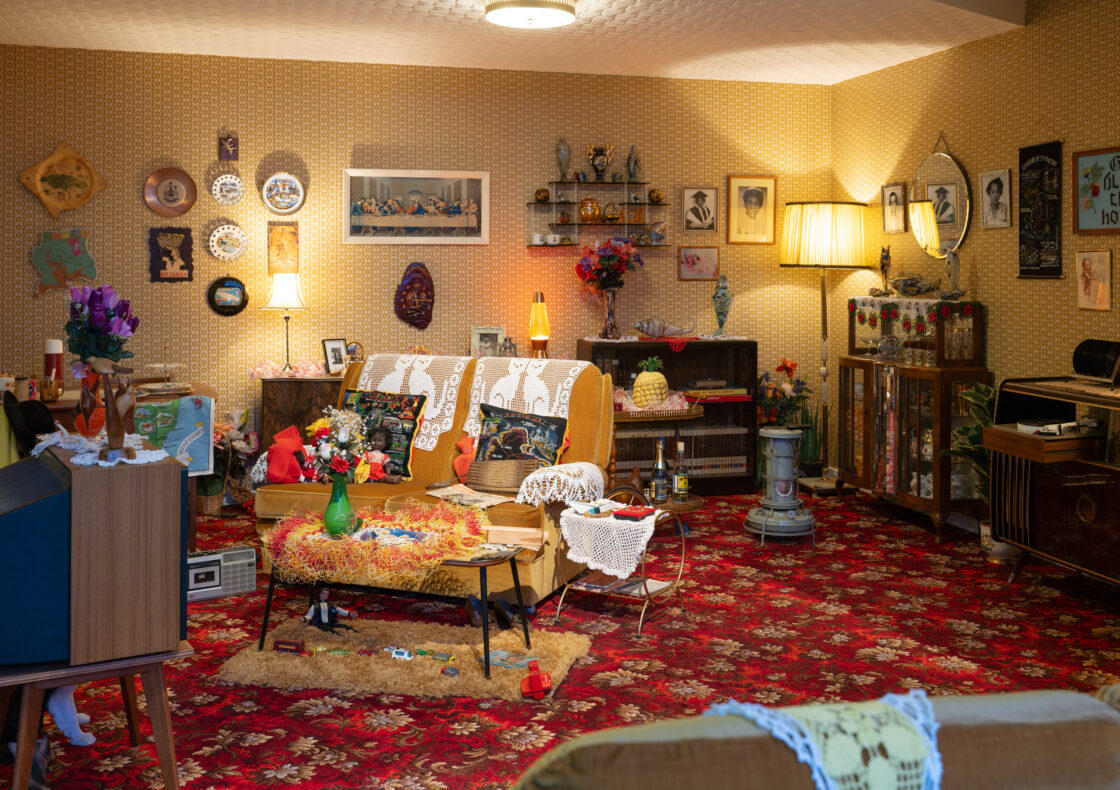Designed in the late 1960s, the De Beauvoir Estate in Hackney aimed to accommodate all needs with high-rise and mid-rise flats, as well as terraced houses like this, centred around shops and communal areas. It was part of a long-running housing initiative which resulted in nearly 6.5 million council homes by the late 1970s.
It’s a cold Saturday evening in Hoxton, and Dad lights the paraffin heater. It provides warmth and noxious fumes in equal measure.
The heater also has another use, with Mum heating up her hot iron comb to straighten her hair for church tomorrow.
Reggae had been blasting from the radiogram for much of the day, but Dad has just turned it down so that the whole family can watch the telly. It’s the final episode of Empire Road, the first British soap opera with a predominately black cast and crew.
The children, who have been allowed to stay up late for the occasion, are excited to see families and homes like their own represented on TV.
The Front Room, curated by Michael McMillan, represents a working-class British Caribbean family living in social housing. This is a constantly evolving installation, with iterations displayed across the country and internationally.
Objects to look out for

Crochet Doilies
Crochet was taught to young women in the Caribbean by Christian missionaries. The pieces displayed in the room belonged to Michael’s Mum, Letha, and family friends Cynthia and Linda, who, like many Caribbean migrant women, made pieces to supplement their income.
Crochet doilies, Credit: Jaron James

Plastic in the Home
By the 1970s, many of the objects used in the home such as telephones, radios, toys and ornaments were made from plastic. Seen by many as the material of the future, plastic was celebrated for its low cost and endless uses, and little concern was paid to its environmental impact until the end of the century.
Plastic in the home, Credit: Jaron James

Filled to the Brim
Class and ethnicity play an important role in the design and content of this home. Front rooms in the homes of many Black Caribbean families were filled with objects and colourful patterns drawn from a tropical palette, a style distinct from English interiors of the time.
Filled to the brim, Credit: Jaron James

Free digital guide
Explore Museum of the Home with our digital guide on Bloomberg Connects, the free arts and culture app.
